NEW

Application Development in Single Diodes: Key Technologies and Success StoriesWhile the CFR-25JB-52-1M8 is a resistor, the world of single diodes encompasses a wide range of technologies and applications that are critical in modern electronics. Below, we explore key technologies in single diodes and highlight notable success stories that illustrate their impact across various industries.
Key Technologies in Single Diodes1. Silicon Diodes2. Schottky Diodes3. Zener Diodes4. Photodiodes5. High-Temperature Diodes6. Silicon Carbide (SiC) and Gallium Nitride (GaN) Diodes1. Power Supply Innovations2. Solar Energy Optimization3. Telecommunications Advancements4. Automotive Industry Transformation5. Consumer Electronics Reliability Success Stories ConclusionThe development and application of single diodes have profoundly influenced various sectors, including consumer electronics, renewable energy, telecommunications, and automotive industries. As technology continues to advance, the focus on efficiency, miniaturization, and enhanced performance will drive further innovations in diode applications. If you have specific applications or technologies in mind, feel free to ask for more detailed information!
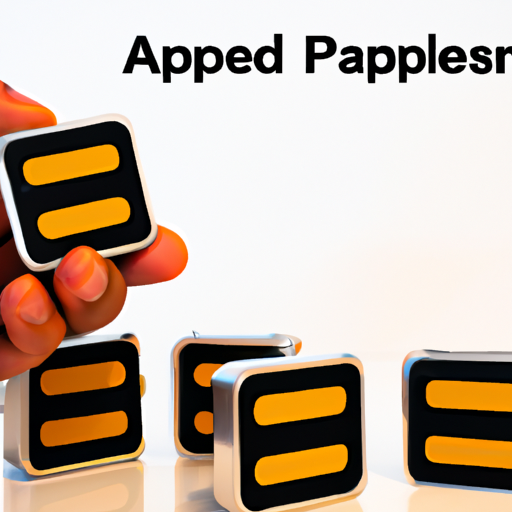
Application Development in FETs and MOSFETs: Key Technologies and Success StoriesThe CFR-25JB-52-1K8 resistor, a 1.8 kΩ, 1/4 watt thick film resistor, is often used in conjunction with FETs (Field Effect Transistors) and MOSFETs (Metal-Oxide-Semiconductor Field-Effect Transistors) in various electronic circuits. While the resistor itself is not a semiconductor device, it plays a critical role in the performance and stability of circuits that utilize FETs and MOSFETs. Below, we explore key technologies in FETs and MOSFETs, along with notable success stories that highlight their applications.
Key Technologies in FETs and MOSFETs1. High Electron Mobility Transistors (HEMTs)2. Power MOSFETs3. Complementary MOS (CMOS) Technology4. Wide Bandgap Semiconductors (GaN and SiC)5. Integrated Circuits (ICs)1. Electric Vehicles (EVs)2. Renewable Energy Systems3. Consumer Electronics4. Telecommunications5. Industrial Automation Success Stories ConclusionWhile the CFR-25JB-52-1K8 resistor may not directly relate to FETs and MOSFETs, these semiconductor devices are essential in many applications where resistors are also utilized. The advancements in FET and MOSFET technologies have led to significant improvements in efficiency, performance, and miniaturization across various industries, from automotive to consumer electronics. The integration of these technologies continues to drive innovation and success in application development, showcasing the critical role of FETs and MOSFETs in modern electronics.

Overview of DIACs and SIDACsDIACs (Diode for Alternating Current) and SIDACs (Silicon Diode for Alternating Current) are crucial semiconductor devices in power electronics, known for their ability to control and manage AC power. Their unique characteristics make them suitable for various applications, particularly in dimming, motor control, and surge protection.
Core Functional Technology 1. DIACs (Diode for Alternating Current)
- **Bidirectional Conductivity**: DIACs can conduct current in both directions once the applied voltage exceeds a specific breakover voltage. This feature allows them to be used in AC circuits effectively.
- **Switching Mechanism**: In the off state, DIACs act like an open circuit. When the voltage surpasses the breakover threshold, they switch to the on state, allowing current to flow. This property is particularly useful in phase control applications.
- **Applications**: Commonly found in light dimmers, motor speed controllers, and over-voltage protection circuits. 2. SIDACs (Silicon Diode for Alternating Current)
- **Higher Power Handling**: SIDACs are designed to manage higher power levels compared to DIACs, making them suitable for more demanding applications.
- **Fast Response**: They can quickly switch on in response to voltage spikes, providing effective over-voltage protection.
- **Applications**: Used in surge protection devices, snubber circuits, and as triggers for SCRs (Silicon Controlled Rectifiers). Application Development Cases 1. Light Dimming Circuits
- **Implementation**: DIACs are integrated with TRIACs in light dimmers to control the brightness of incandescent lamps. By adjusting the phase angle of the AC voltage, users can achieve smooth dimming.
- **Benefits**: This application not only enhances user experience with adjustable lighting levels but also contributes to energy savings. 2. Motor Speed Control
- **Implementation**: In fan speed controllers, DIACs regulate the speed of AC motors by varying the phase angle, thus controlling the effective voltage and current supplied to the motor.
- **Benefits**: This results in energy-efficient operation, reduced noise levels, and improved comfort in household appliances. 3. Surge Protection Devices
- **Implementation**: SIDACs are employed in surge protection circuits to clamp voltage spikes that could damage sensitive electronic components. They activate quickly when a voltage threshold is exceeded, diverting excess current.
- **Benefits**: This application is vital for protecting electronic devices from transient voltage spikes, ensuring their reliability and longevity. 4. Triggering SCRs in Power Control Applications
- **Implementation**: SIDACs can trigger SCRs in phase control applications for heating elements. When triggered, the SIDAC allows the SCR to conduct, controlling the power delivered to the load.
- **Benefits**: This method provides precise control over power delivery, enhancing efficiency in heating applications. 5. Over-voltage Protection in Power Supplies
- **Implementation**: Both DIACs and SIDACs can be integrated into power supply circuits to safeguard against over-voltage conditions. They act as safety mechanisms to prevent damage to downstream components.
- **Benefits**: This integration enhances the reliability of power supply systems, making them safer for sensitive electronic devices. ConclusionDIACs and SIDACs play a pivotal role in modern electronic design, particularly in applications requiring AC power control. Their ability to handle high voltages and currents, coupled with fast switching capabilities, makes them effective solutions for a wide range of applications, from lighting control to surge protection. As technology advances, the integration of these devices into new applications is expected to expand, further enhancing their utility in power electronics. Their continued development will likely lead to even more innovative applications, solidifying their importance in the field.
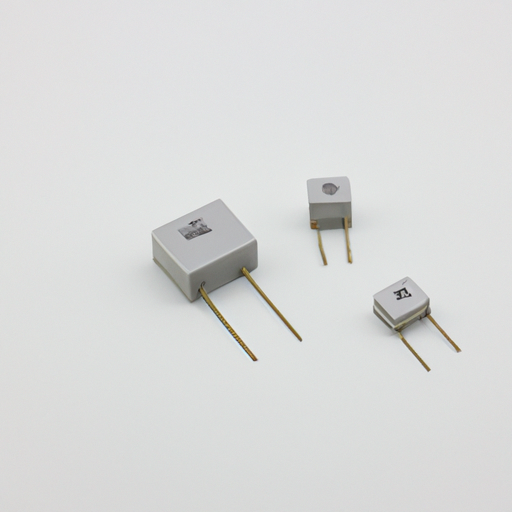
Overview of Crystal, Oscillator, and Resonator AccessoriesCrystal oscillators, resonators, and their accessories are fundamental components in modern electronics, providing stable frequency references essential for timing and synchronization across a wide array of applications. The CFR-25JB-52-1M6 is a notable model of crystal oscillator that showcases the capabilities of this technology. This overview delves into the core functional technologies, relevant articles, and application development cases that highlight the effectiveness of crystal oscillators and their accessories.
Core Functional Technologies1. Crystal Oscillator Technology2. Resonator Technology3. Accessories1. Consumer Electronics2. Automotive Applications3. Industrial Automation4. Telecommunications Application Development Cases ConclusionThe CFR-25JB-52-1M6 crystal oscillator, along with its associated technologies, plays a crucial role in a diverse range of applications, from consumer electronics to industrial automation. By understanding the core functional technologies and examining real-world application development cases, engineers and developers can effectively leverage these components in their designs. As technology continues to advance, the demand for high-performance crystal oscillators and resonators will grow, driving innovation across various fields and applications.

Application Development in Resonators for CFR-50JB-52-1M6: Key Technologies and Success StoriesThe development of resonators, particularly models like the CFR-50JB-52-1M6, is a dynamic field that integrates cutting-edge technologies to improve performance, reliability, and functionality across various applications. Below is an overview of key technologies and notable success stories in this area.
Key Technologies1. Material Science2. Microfabrication Techniques3. Simulation and Modeling4. Control Systems5. Integration with Electronics1. Telecommunications2. Consumer Electronics3. Automotive Applications4. Medical Devices5. Industrial Sensors Success Stories ConclusionThe application development of resonators like the CFR-50JB-52-1M6 is propelled by advancements in materials, fabrication techniques, and electronic integration. The success stories across diverse industries underscore the versatility and critical importance of resonators in modern technology. As research and development continue to evolve, we can anticipate further innovations that will expand the capabilities and applications of resonators, driving progress in telecommunications, consumer electronics, automotive, medical, and industrial sectors.
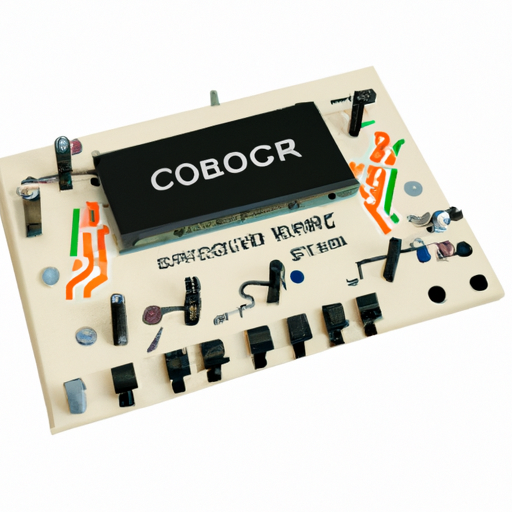
Overview of CFR-25JB-52-1K6 VCOsThe CFR-25JB-52-1K6 is a specific model of Voltage Controlled Oscillator (VCO) that exemplifies the core functionalities and applications of VCO technology. VCOs are critical in various electronic systems, particularly in communication and signal processing, due to their ability to generate frequencies that can be modulated by an input voltage.
Core Functional Technology of VCOs1. Basic Operation2. Types of VCOs3. Key Parameters1. Communication Systems2. Signal Generators3. Radar Systems4. Synthesizers5. Automotive Applications6. Consumer Electronics Application Development Cases ConclusionThe CFR-25JB-52-1K6 VCO, like other VCOs, is a vital component in modern electronics, facilitating a wide array of applications from telecommunications to consumer electronics. Its ability to generate precise frequencies controlled by voltage makes it indispensable across various fields, including automotive, audio synthesis, and communication systems. As technology evolves, the demand for more efficient, stable, and compact VCOs continues to drive innovation, ensuring their relevance in future electronic designs.
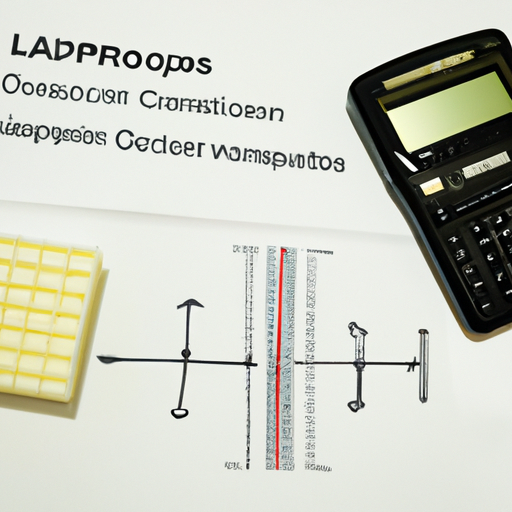
Application Development in Programmable Oscillators for CFR-50JB-52-1K6: Key Technologies and Success StoriesProgrammable oscillators, such as the CFR-50JB-52-1K6, are essential components in a wide range of applications, including telecommunications, consumer electronics, and industrial systems. These oscillators offer precise frequency generation and can be programmed to meet specific requirements, making them versatile for various use cases. Below are some key technologies and success stories related to the application development of programmable oscillators like the CFR-50JB-52-1K6.
Key Technologies1. Digital Control and Programming:2. Phase-Locked Loop (PLL) Technology:3. Low Power Consumption:4. Temperature Compensation:5. Multi-Output Capability:6. Integration with FPGA and Microcontrollers:1. Telecommunications:2. Consumer Electronics:3. Automotive Applications:4. Industrial Automation:5. Medical Devices: Success Stories ConclusionThe CFR-50JB-52-1K6 and similar programmable oscillators represent a significant advancement in frequency generation technology. Their flexibility, precision, and integration capabilities have led to successful applications across various industries, driving innovation and improving performance in numerous devices. As technology continues to evolve, the role of programmable oscillators will likely expand, enabling even more sophisticated applications in the future. The ongoing development of these technologies will further enhance their capabilities, making them indispensable in the next generation of electronic systems.
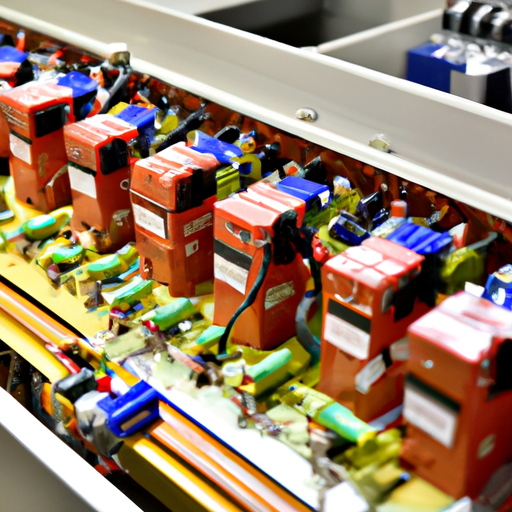
Application Development in Isolation Transformers and Autotransformers: Key Technologies and Success StoriesWhen exploring application development in isolation transformers and autotransformers, particularly with components like the CFR-25JB-52-1R5, it is vital to understand the underlying technologies, their applications, and notable success stories that demonstrate their effectiveness.
Key Technologies1. Isolation Transformers2. Autotransformers3. Step-Up and Step-Down Transformers4. CFR-25JB-52-1R51. Medical Equipment2. Industrial Automation3. Renewable Energy Systems4. Consumer Electronics Success Stories ConclusionThe development and application of isolation transformers and autotransformers, particularly in conjunction with components like the CFR-25JB-52-1R5, are crucial across various industries. By addressing challenges related to voltage regulation, electrical isolation, and noise reduction, these technologies have led to significant improvements in safety, efficiency, and performance. As technology continues to advance, the integration of these transformers is expected to expand, paving the way for innovative solutions that meet the evolving needs of diverse sectors.
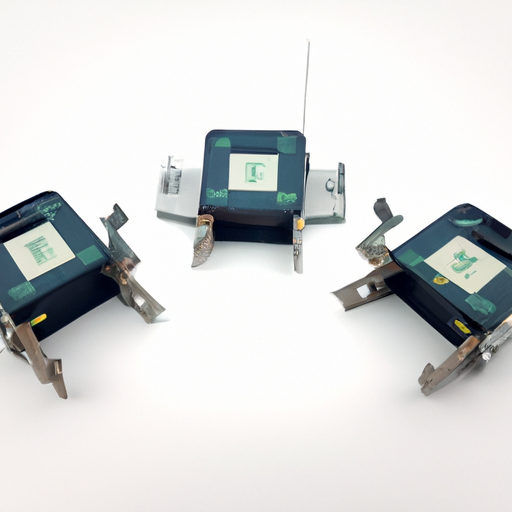
Overview of CFR-25JB-52-1M5 Pulse TransformersThe CFR-25JB-52-1M5 pulse transformer is a specialized component designed for high-fidelity transmission of electrical pulses. Its unique characteristics make it suitable for a variety of applications, particularly in telecommunications, power electronics, and signal processing. Below, we delve deeper into the core functional technologies and application development cases that highlight the effectiveness of pulse transformers like the CFR-25JB-52-1M5.
Core Functional Technologies1. High-Frequency Operation2. Low Insertion Loss3. Wide Bandwidth4. Electrical Isolation5. Temperature Stability6. Compact Design1. Telecommunications2. Switching Power Supplies3. Data Acquisition Systems4. Medical Equipment5. Industrial Automation6. Radar and Defense Systems Application Development Cases ConclusionThe CFR-25JB-52-1M5 pulse transformer exemplifies the critical role that pulse transformers play in modern electronic systems. With features such as high-frequency operation, low insertion loss, and electrical isolation, these transformers are indispensable in a wide range of applications, from telecommunications to medical devices. As technology advances, the development of more sophisticated pulse transformers will continue to enhance their performance and expand their application potential, driving innovation across various industries.
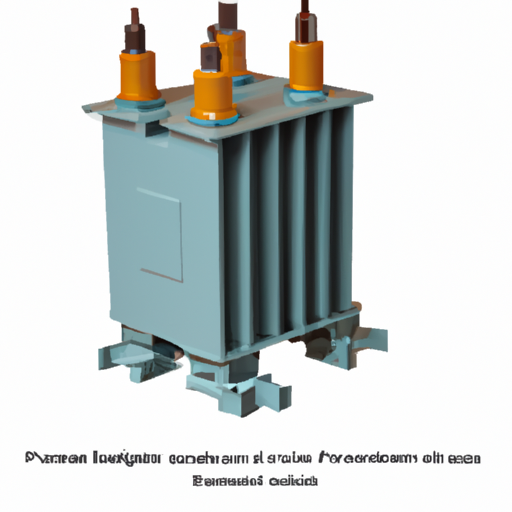
Overview of CFR-25JB-52-1K5 Power TransformersThe CFR-25JB-52-1K5 power transformer, while not widely recognized in general literature, represents a specific model within the broader category of power transformers. These transformers are essential components in electrical power systems, facilitating the transmission and distribution of electricity across various applications. Below, we delve into the core functional technologies and application development cases relevant to power transformers, including insights that may apply to the CFR-25JB-52-1K5 model.
Core Functional Technologies of Power Transformers1. Magnetic Core Design2. Winding Techniques3. Cooling Systems4. Insulation Technology5. Monitoring and Diagnostics1. Renewable Energy Integration2. Smart Grids3. Urban Infrastructure4. Industrial Applications5. Electric Vehicle Charging Stations6. Data Centers Application Development Cases ConclusionPower transformers, including models like the CFR-25JB-52-1K5, are integral to modern electrical systems, supporting a diverse range of applications from renewable energy integration to urban infrastructure. Advances in materials, design, and monitoring technologies continue to enhance their efficiency, reliability, and adaptability to evolving energy demands. As the energy landscape transforms, the development of innovative transformer solutions will be crucial in addressing future challenges and ensuring a sustainable energy future.

Application Development in Accessories for LT1213CS8: Key Technologies and Success StoriesThe LT1213CS8, a mobile impact crusher from Metso Outotec, is a vital piece of equipment in the construction and recycling sectors. The development of accessories for this machinery is crucial for enhancing its performance, efficiency, and usability. Below, we explore key technologies and notable success stories that illustrate the impact of these advancements.
Key Technologies1. IoT and Remote Monitoring:2. Advanced Materials:3. Automation and Control Systems:4. Enhanced Safety Features:5. Energy Efficiency Technologies:1. Recycling Operations:2. Construction Projects:3. Remote Operations:4. Energy Savings:5. Safety Enhancements: Success Stories ConclusionThe development of accessories for the LT1213CS8 mobile impact crusher is propelled by technological advancements that prioritize efficiency, safety, and sustainability. By leveraging IoT, advanced materials, automation, and energy-efficient solutions, companies can significantly enhance the performance of their equipment. The success stories from various industries underscore the tangible benefits of these innovations, demonstrating the potential for increased productivity and reduced operational costs in application development. As the industry continues to evolve, the integration of these technologies will play a crucial role in shaping the future of mobile crushing operations.

Application Development in Value Display Potentiometers for CFR-25JB-52-1K3: Key Technologies and Success StoriesValue Display Potentiometers, such as the CFR-25JB-52-1K3, are integral components in a wide array of electronic applications, particularly where precise resistance control is paramount. These potentiometers find utility in diverse fields, including audio equipment, industrial controls, and consumer electronics. Below is an exploration of key technologies and notable success stories related to the application development of these components.
Key Technologies1. Digital Potentiometers2. Analog Potentiometers3. Hybrid Potentiometers4. Touch and Gesture Control5. Wireless Control6. Feedback Mechanisms1. Audio Equipment2. Industrial Automation3. Consumer Electronics4. Medical Devices5. Automotive Applications Success Stories ConclusionThe application development of Value Display Potentiometers, such as the CFR-25JB-52-1K3, underscores the versatility and significance of these components in contemporary electronics. With ongoing advancements in technology—such as digital interfaces and wireless control—the potential for innovative applications continues to expand. Success stories across various industries illustrate the critical role potentiometers play in enhancing user experience and improving device functionality. As technology progresses, we can anticipate even more sophisticated applications and integrations of potentiometers in future designs, further solidifying their importance in the electronic landscape.

Trimmer Potentiometers: Core Functional Technology and Application DevelopmentTrimmer potentiometers, such as the CFR-50JB-52-1K3, are vital components in electronic circuits, enabling precise adjustments of resistance values to optimize performance. Below, we delve into the core functional technologies, relevant articles, and application development cases that illustrate the effectiveness of trimmer potentiometers.
Core Functional Technology1. Basic Operation2. Types of Trimmer Potentiometers3. Adjustment Mechanism4. Applications1. "Understanding Potentiometers: Types and Applications"2. "The Role of Trimmer Potentiometers in Circuit Design"3. "Designing with Trimmer Potentiometers"1. Audio Equipment Calibration2. Sensor Sensitivity Adjustment3. Power Supply Regulation4. Calibration of Measurement Instruments Articles and Resources Application Development Cases ConclusionTrimmer potentiometers, such as the CFR-50JB-52-1K3, are indispensable in electronic design and application development. Their ability to provide precise adjustments makes them crucial in various fields, including audio engineering, sensor technology, and measurement instrumentation. A thorough understanding of their functionality and applications can lead to more effective designs and improved performance in electronic systems, ultimately enhancing the reliability and accuracy of electronic devices.

Application Development in Arrays and Signal Transformers for CFR-25JB-52-1R2: Key Technologies and Success StoriesApplication development in arrays and signal transformers, particularly for components like the CFR-25JB-52-1R2, involves a multidisciplinary approach that combines electronic engineering, software development, and system integration. The CFR-25JB-52-1R2 is a precision resistor widely used in various electronic applications, including signal processing and conditioning. Below is an overview of key technologies and success stories related to this topic.
Key Technologies1. Array Technology2. Signal Transformers3. Digital Signal Processing (DSP)4. Simulation and Modeling Tools5. Embedded Systems1. Telecommunications2. Consumer Electronics3. Medical Devices4. Automotive Applications5. Industrial Automation Success Stories ConclusionThe development of applications using arrays and signal transformers, such as the CFR-25JB-52-1R2, exemplifies the intersection of hardware and software technologies. By effectively leveraging these components, industries can achieve enhanced performance, reliability, and efficiency in their electronic systems. As technology continues to evolve, the integration of these components into new applications will likely lead to further innovations and success stories across various sectors, driving advancements in electronic design and functionality.